 |
 |
 |
| |
Impaired Cardiac Strain and Biomarkers of Immune Activation in HIV
|
| |
| |
Reported by Jules Levin
Presented at the 16th International Workshop on Co-morbidities and Adverse Drug Reactions in HIV 6 October 2014, Philadelphia USA
C Hadigan, DK Thiara, L Howard, CY Lui, F Raman, S Mangat, JB Purdy, CT Sibley, DA Bluemke
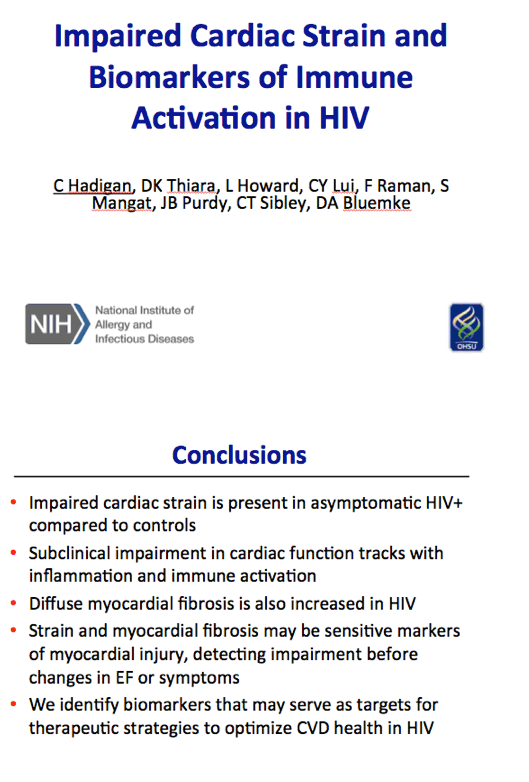
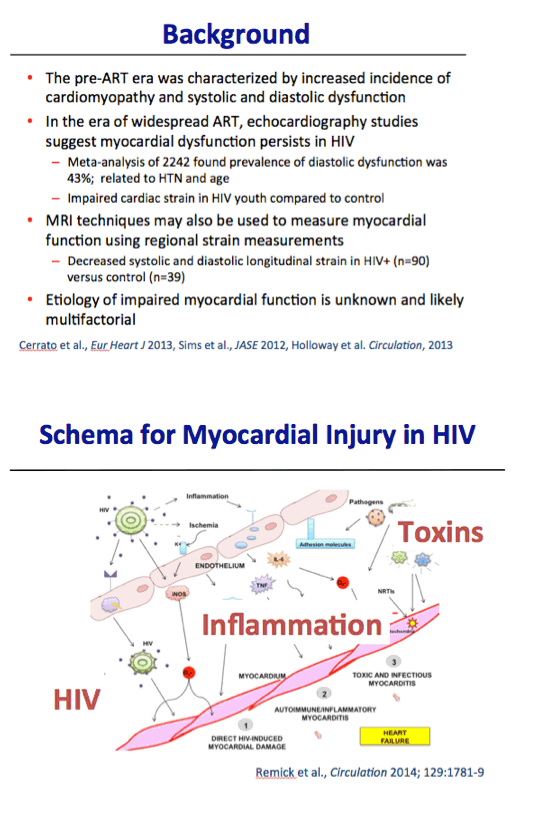
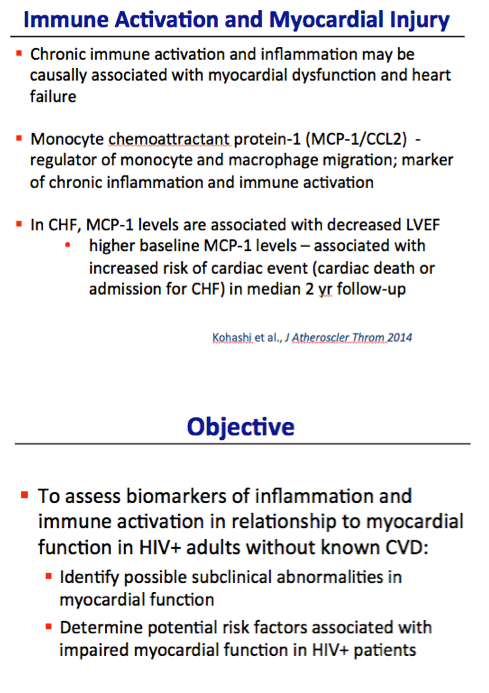
Program abstract:
Impaired cardiac strain and biomarkers of immune activation in HIV
C Hadigan1, DK Thiara1, L Howard1, CY Lui1, F Raman1, S Mangat1, JB Purdy1, CT Sibley2,
DA Bluemke1
1National Institutes of Health, Bethesda, MD, USA; 2Oregon Health and Sciences University, Portland, OR, USA
Aim: Chronic HIV infection is associated with an increased risk of cardiovascular disease and measures of subclinical cardiac dysfunction are increasingly used to investigate the underlying aetiology of this association. Therefore, we evaluated the relationships between measures of cardiac strain and cardiac fibrosis by MRI with traditional cardiovascular disease risk factors and biomarkers of immune activation in a cohort of HIV-infected adults without known cardiovascular disease.
Methods: This is a prospective cross-sectional study of 95 HIV-infected adults and 30 age-, sex-, race-matched healthy controls. Myocardial fibrosis (quantified as extracellular volume index) and regional cardiac strain were measured by MRI techniques. Participants had laboratory determinations including a lipid panel, CD4 T-cell count, HIV viral load and serological biomarkers of inflammation, coagulation and immune activation (for example, C-reactive protein [CRP], D-dimer, and pro-brain natriuretic peptide [pro-BNP], monocyte chemoattractant protein-1 [MCP-1], lipopolysaccharide binding protein [LBP]).
Results: Radial strain and epicardial-endocardial circumferential strain were significantly decreased (decrease is bad) in HIV compared to control participants (Table 1) and this impairment was strongly correlated with increased levels of specific biomarkers, most notably, MCP-1 (r=-0.43, P<0.0001) and LBP (r=-0.25, P=0.02). Myocardial extracellular volume index, a measure of fibrosis, was also increased (increase is bad) in the HIV-infected group compared to the controls. Impaired radial strain rate and epicardial-endocardial circumferential strain were correlated with increased myocardial fibrosis (r=0.26, P=0.007; r=0.22, P=0.03), respectively, however, these correlations were not significant when assessed separately for the HIV-infected or control cohorts.
Conclusions: Strain indices of systolic dysfunction were decreased in HIV-infected subjects. Further, subclinical impairment in systolic function was associated with markers of chronic immune activation. Similar to patients with chronic heart failure, increased levels of MCP-1, a chemokine important in the regulation of monocyte and macrophage migration and a marker of immune activation, was strongly associated with impairment in cardiac function. LBP, an acute phase protein made in response to lipopolysaccharide (LPS), was also associated with impaired cardiac strain in the HIV-infected cohort. Our findings indicate that subclinical impairment in cardiac strain tracks with markers of chronic inflammation and immune activation, which may serve as targets for future therapeutic strategies to optimize long-term cardiovascular health in persons living with HIV.
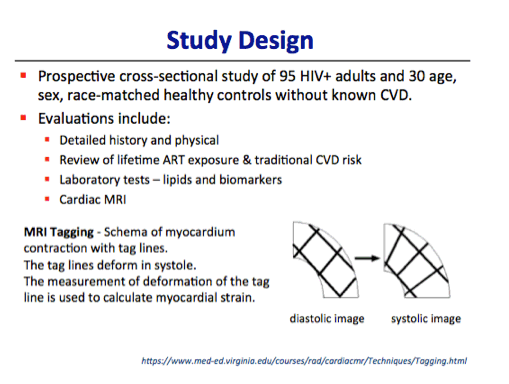
Why is this MRI the best? - non-operator dependent, only technique to show the coronaries (non-invasive), not just showing the lumen but also the actual thickness of the vessel
BB-MRI - relies on nulling of the MR signal from the vascular lumen while retaining signal from the vascular wall, allowing better visualization of wall thickness
-Plaque was defined as any calcification involving the coronary artery or non-calcified soft tissue density abutting the coronary lumen causing irregularlity or significant luminal narrowing
-Evaluated 17 AHA segments for number of lesions, size, and amount of luminal narrowing
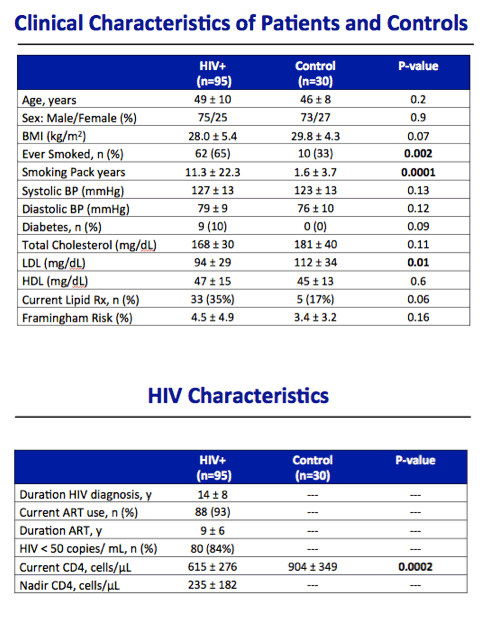
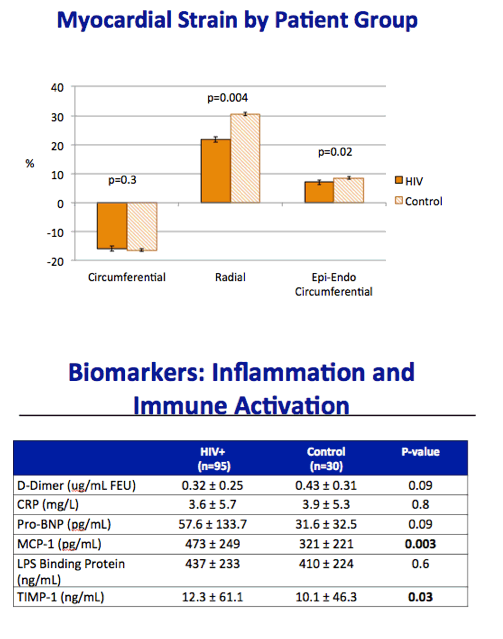
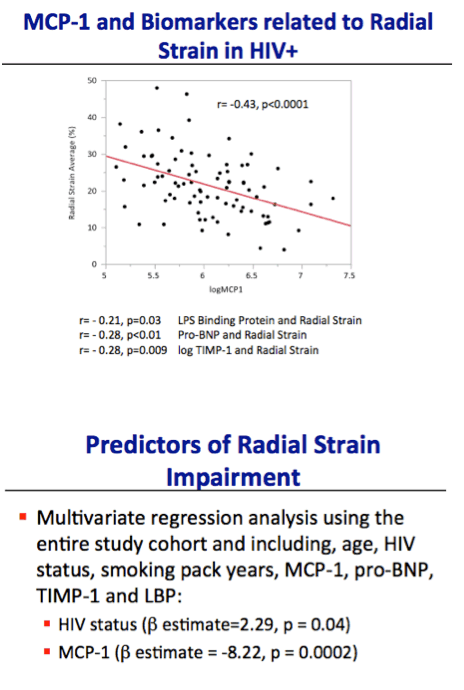
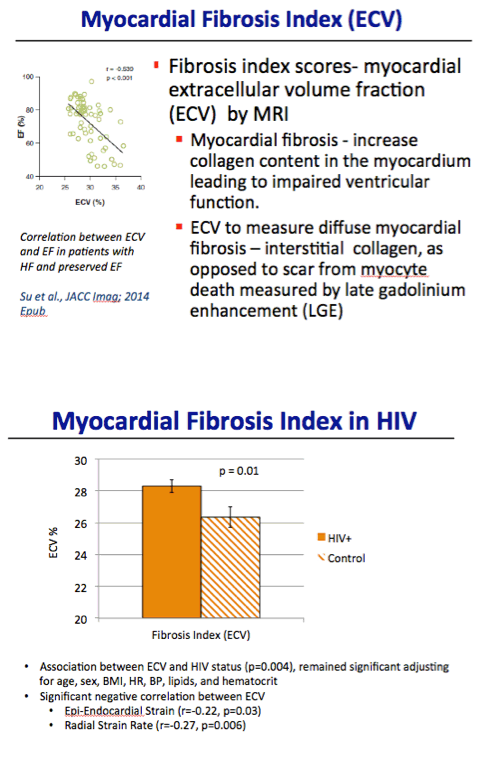
from Jules: the bigger the numbers here for myocardial fibrosis for HIV+ are worse compared to lower numbers for HIV-neg.
|
| |
|
 |
 |
|
|